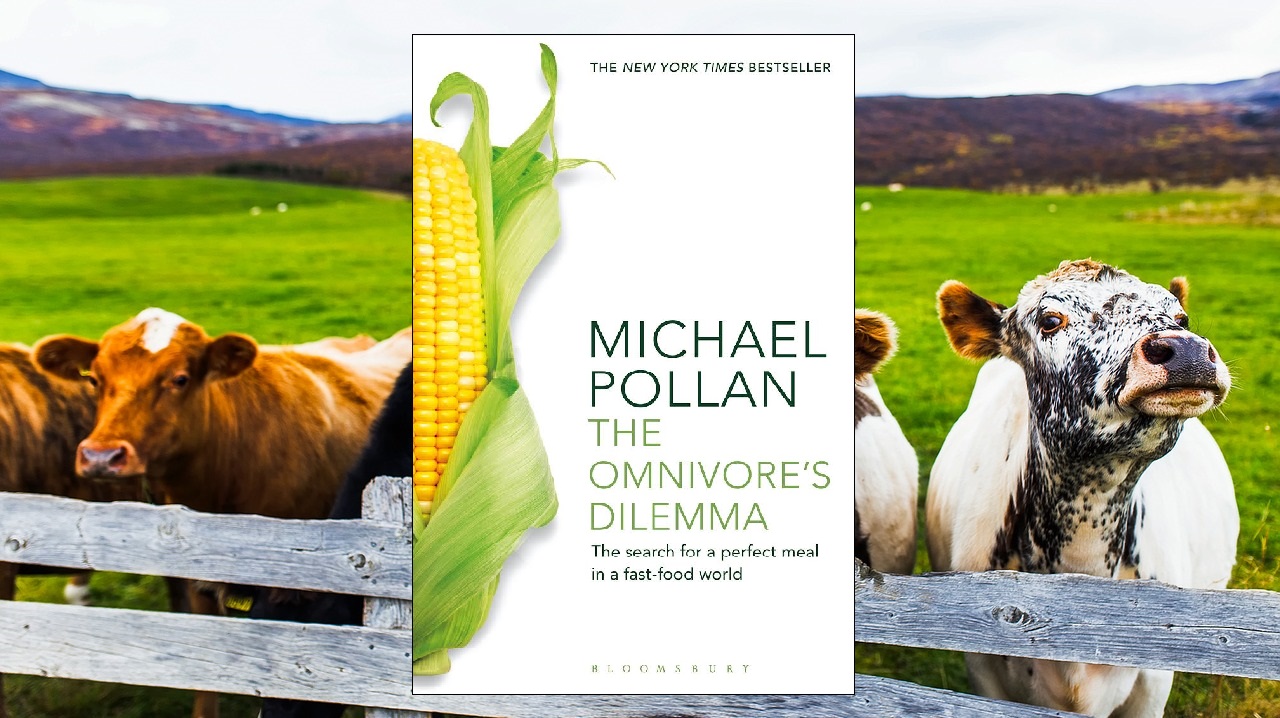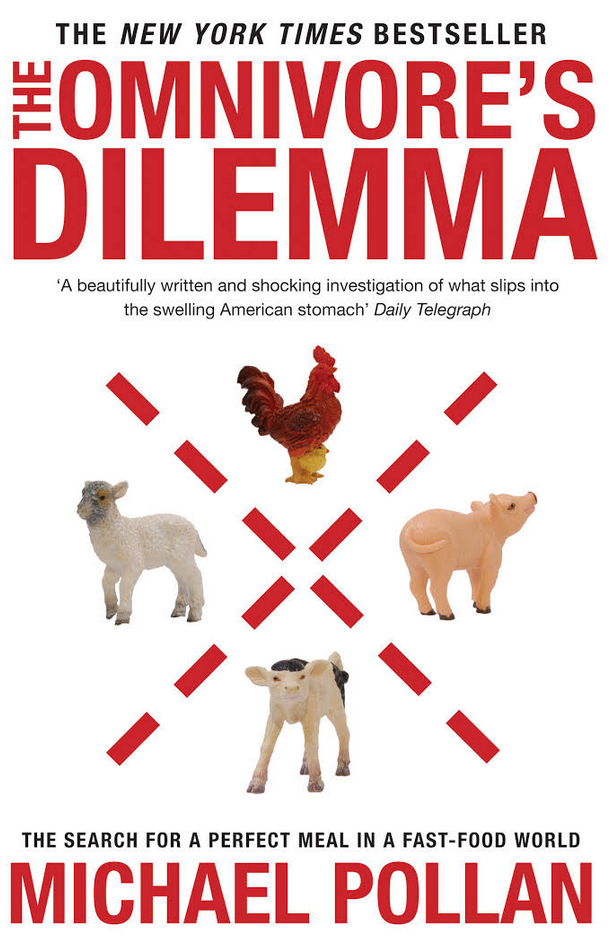
The sooner you realise that companies who sell food prioritise profits over your health and well-being, the more suspicious you become as you do your weekly shop. This book should ward you off fast food and fizzy drinks, favouring more wholesome foods.
My second recommended read is…
The Omnivore’s Dilemma by Michael Pollan
PRO TIP: Take notes! When you read a book, use a blank sheet of paper as a bookmark. Write down any interesting facts and information from the book. This condenses a whole book into 3-4 pages of key notes that are important and relevant to you.
My Notes
- It’s estimated that 3 in 4 US supermarket products are derived from CORN in some way. These include fast food meat, french fries, chicken nuggets, soda (fizzy drinks), ketchup and fruit juice.
- Other foods containing corn derivatives include yoghurt, salad dressing, soup, baked goods, gravy, mayonnaise, peanut butter, milk and jelly beans.
- We’re only naturally able to grow corn for 2 years out of five as it depleted nitrogen in the soil. This was ‘fixed’ by the creation of synthetic nitrogen.
- Leftover ammonium nitrate from World War 2 is used as chemical pesticides and fertilizer.
- The US Government is funding corn production. This keeps prices low for fast food companies and damages the health of the population.
- Food companies are burdened by ‘inelastic demand’, meaning the consumer can only eat a fixed amount of your product and no more.
- Real food loses profits from both over- and under-production. This is due to factors like the weather as well as wastage from failing to sell all the produce before it goes off.
- A company like McDonald’s can only grow at 1% per year (annual population increase) if it remained the same.
- McDonald’s profits by a) making your calories more expensive, b) cutting corners to produce it cheaper or c) making you eat more than your daily allowance of calories.
- Something like Diet Coke has overcome inelastic demand by being 0 calories. That means people will drink as much as they like in a day without getting full.
- Supersizing allowed for a reduction in price per gram but without hurting profits.
- Bigger portions allow them to sell you more of the product. People are less inclined to buy two small portions but will purchase one extra large portion.
- One large bag of lettuce is 80 calories, the energy to grow and transport each bag is 4,600 calories.
- Free range is defined by “access” to outdoors, but in a shed of 20,000 chickens they aren’t allowed outside in the first five weeks (due to infection risk). That means they have only a two week window before slaughter (7 weeks). Food and water are indoors so they see no reason to venture outside (watch Food Inc.).
- Omega 6 is inflammatory, making blood clot, while Omega 3 is anti-inflammatory, aiding blood flow.
- The ratio of Omega 6:Omega 3 is important for health, and recently our diets have too much Omega 6.
- Beef was initially 1:1, now the animals are corn-fed it’s 10:1. Grass “finished” beef is fed grass in the last two weeks, and the ratio is 2:1.
- Non-wild salmon are now being fed corn. Most supermarket salmon is farmed.
- Most people think all chicken is equal and don’t appreciate the nutrients.
- The human brain consumes 18% of our energy in a day, all from glucose (carbohydrate).


